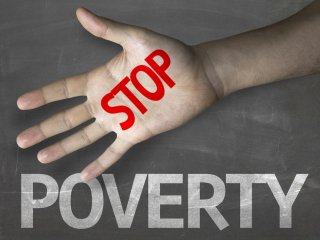Posted February 7th, 2017
By Kris Powers
The American Psychological Association reports that the nation’s economic crisis has deeply affected the lives of millions of Americans. Skyrocketing foreclosures and job layoffs have devastated many families, particularly those living in low-income communities.
The Census Bureau defines poverty on a sliding scale according to the size of a family unit. For a family of four, the poverty threshold in 2015 was $24,000. For an individual, it was $12,000.
Below are a few facts about poverty in the United States. According to the Census Bureau, in 2015 there were:
- 43.1 million people in the United States living in poverty.
- 14.5 million (19.7 percent) children under the age of 18 living in poverty.
- Though the official census data gives seniors a 2015 poverty rate of only 8.8%, the Supplemental Poverty Measure, which accounts for expenses such as the rising costs of health care, raises the senior poverty rate to 13.7%.
- In 2015, the poverty rate for people living with a disability was 29%. That’s more than 4 million people living with a disability—in poverty.
Poverty, hunger and homeless are never easy topics to discuss, especially with children. However, once students and adults alike learn about poverty and its effect on many Americans, they may become motivated to help. Learning the facts may inspire all of us to ask, “What can we do to make a difference?”
Get involved! The Bread for the World Institute has been educating opinion leaders, policymakers, and the public about hunger since 1975 and offers state-by-state fact sheets on hunger. These fact sheets can be distributed to voters, candidates and elected officials at town meetings and rallies to help educate and inform leaders and citizens of poverty issues in their area.
What else can you do to help children and families struggling with poverty, hunger, and homelessness? The American Psychological Association suggests the following:
- Volunteer your time with charities and organizations that provide assistance to low-income and homeless children and families.
- Donate money, food and clothing to homeless shelters, food pantries and other charities in your community.
- Donate school supplies and books to under-resourced schools in your area.
- Make your voice heard! Support public policy initiatives that seek to:
- Improve access to physical, mental, and behavioral health care for low-income Americans by eliminating barriers such as limitations in health care coverage.
- Increase the minimum wage, affordable housing, and job skills training for low-income and homeless Americans.
- Intervene in early childhood to support the health and educational development of low-income children.
- Provide support for low-income and food insecure children such as Head Start, the National School Lunch Program, and the Temporary Assistance for Needy Families (TANF) authorization.
- Increase resources for public education and access to higher education.
- Support research on poverty and its relationship to health, education, and well-being.
Need more inspiration? There are many organizations and community-based projects working on tackling the poverty issue. Poverty USA states that “Every day, thousands of people—working with their neighbors and community—are finding ways out of Poverty USA by strengthening families, creating jobs, and improving neighborhoods.” Visit their “Stories of hope” page and become inspired to support similar programs in your area!
Educating ourselves about the social benefits and personal significance of helping others is just one of the valuable lessons that can be taught during National Poverty Awareness month every January. Empowering communities to come up with solutions to homelessness and hunger is something that can be done all year round.





